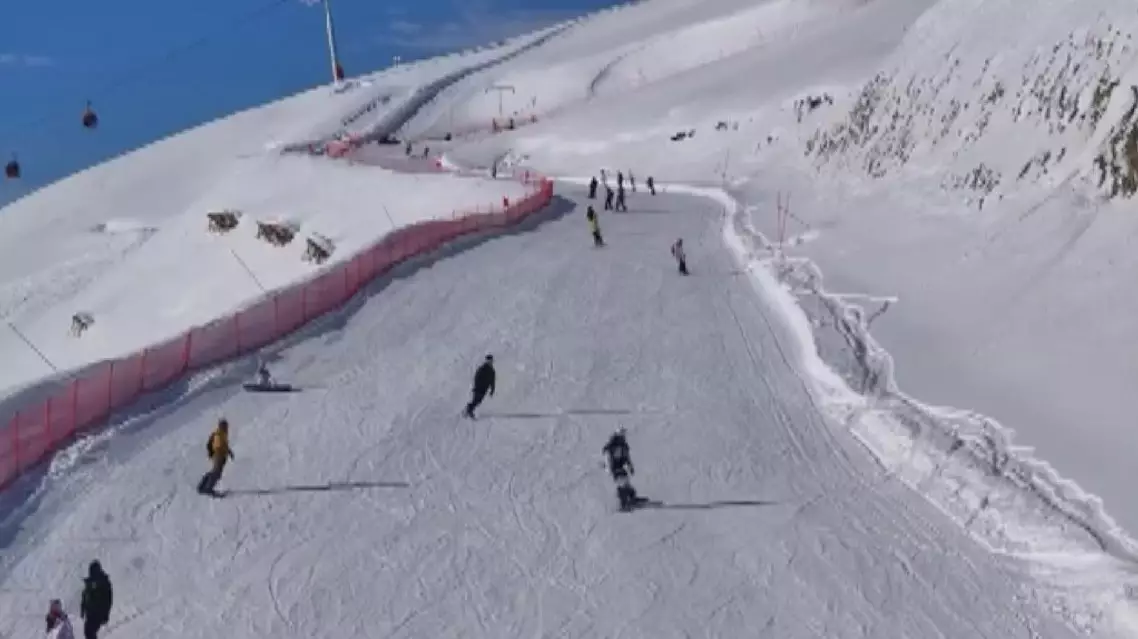The increasing enthusiasm for winter sports fueled by China's hosting of the Winter Olympics in 2022 has greatly boosted the tourism market in northwest China's colder Xinjiang Uygur Autonomous Region.
With favorable natural conditions and multiple high-standard ski resorts, Xinjiang has played a starring role in the development of China's booming winter sports industry. It is now poised to become a global hub for winter sports and adventure tourism, capitalizing on its rich skiing heritage and natural beauty.
Located in Hemu Village of Altay Prefecture's Burqin County in the region, the Jikepulin Ski Resort has been in operation since the 17th of this month. Since then, the number of visitors to the ski resort has been steadily increasing, with numerous winter sports enthusiasts from all over the country coming here to enjoy its magnificent natural scenery and excellent snow quality.
"We are from Puyang [City], Henan [Province]. The four of us have come to Xinjiang for skiing, and it's also our first time to visit a ski resort in Hemu," said an skier.
Altay is emerging as a popular ski destination as its three ski resorts - Jiangjun Mountain, Koktokay and Jikepulin - offer better terrain variety and a longer ski season.
Data show that during the 2023-2024 winter season, Altay has received over one million skiers' visits. This year, since late October, the three large ski resorts in Altay are currently receiving over 6,000 skier visits daily.
Thanks to the impact of operation of the Jikepulin Ski Resort, winter tourism in Hemu has rapidly gained popularity over the past two years. The transportation facilities in the village have seen rapid development, and the number of beds in homestays and hotels in the village has exceeded 10,000 so far this year.
"Thanks to the strong support of the current ice and snow policies of the state, both the development of this scenic area and the planning within Hemu Village will continue to improve. Therefore, I believe that this place has a promising future," said Song Xiaotian, owner of a homestay in Hemu Village.
China has unveiled an ambitious plan to grow its ice-and-snow economy, targeting winter sports, tourism and equipment manufacturing as key drivers of economic growth, with a projected value of 1.5 trillion yuan (about 0.21 trillion U.S. dollars) by 2030.

Winter sports boost tourism market in northwest China's Xinjiang









